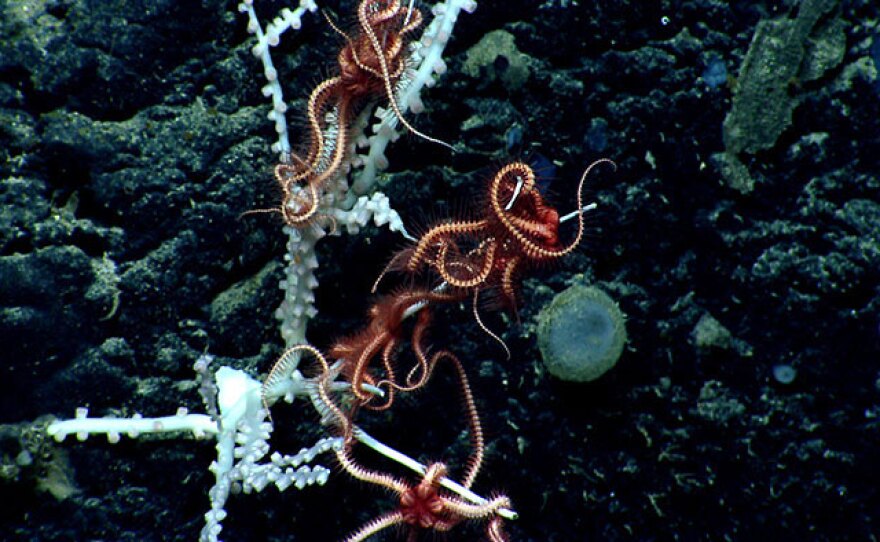We have better maps of the surface of Mars than we do of the bottom of the ocean. That’s due entirely to unmanned exploration. The Mars rovers - Curiosity, Spirit, Opportunity - have captured the public's attention and imagination in recent years.
Here on Earth, remotely operated and autonomous underwater robots are workhorses of oceanography, giving scientists access to deep sea volcanoes and the undersides of polar ice shelves. But they seldom make headlines or become household names like their human-occupied cousins - Alvin, or James Cameron’s submersible Deep Sea Challenger.
Dr. Hanumant Singh of Woods Hole Oceanographic Institution says he's okay with that. In fact, he'd like to see the underwater robots he works with become more like commodities than celebrities - nameless machines that are inexpensive enough that scientists can push the envelope and not worry if one robot breaks or fails to return from a mission.
But taking humans out of underwater vehicles doesn't mean taking them out of the equation. Indeed, Singh and Andy Bowen, Director of the National Deep Submergence Facility at Woods Hole Oceanographic Institution, emphasize that robots are excellent tools for gathering information but remain pretty inept at the act of making a discovery or translating data into knowledge. Those are functions still reserved for the human brain.
Traditionally, a small number of such human brains would reside in a darkened trailer aboard a research ship bobbing on the surface above whatever patch of seafloor said robot is exploring. But over the past three years, Dr. Tim Shank, a deep-sea biologist at Woods Hole Oceanographic Institution, has been participating in so-called telepresence cruises. He and dozens of other scientists - not to mention school classrooms and members of the public - watch streaming video from a remotely operated vehicle, and communicate with the operators and each other via conference call and internet, all in real-time. It's like having forty scientists on a research cruise together - a logistically and financially impossible feat.
Shank says the benefits of the telepresence model have exceeded all expectations, generating more discoveries, collaborations, and proposals for further research than anyone imagined.
For more:
- View photos and videos from the most recent cruise of the Okeanos Explorer
- Learn more at a public event hosted by Woods Hole Oceanographic Institution











